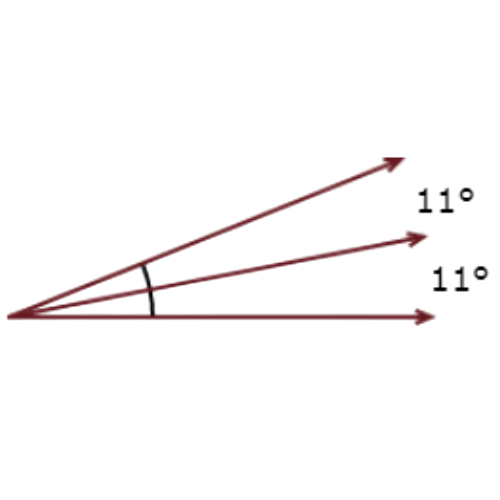Find lengths and measures of bisected line segments and angles
Key notes:
Bisecting a Line Segment
- Bisect: To bisect means to divide something into two equal parts.
- Bisector: A bisector is a line, ray, or line segment that divides something into two equal parts.
- Midpoint: The midpoint of a line segment is the point that divides the segment into two congruent segments.

Finding the Midpoint
- Formula: The midpoint of a line segment with endpoints (x₁, y₁) and (x₂, y₂) is found using the formula:
- Midpoint = ((x₁ + x₂) / 2, (y₁ + y₂) / 2)
Bisecting an Angle
- Angle Bisector: An angle bisector is a ray that divides an angle into two congruent angles.
- Compass and Straightedge: To bisect an angle, you can use a compass and straightedge.
Finding the Measure of a Bisected Angle
- If an angle is bisected, each of the resulting angles will have a measure equal to half the measure of the original angle.
Learn with an example
🔔 An angle is bisected, forming two new angles. Each new angle has a measure of 11°. What was the measure of the original angle?

________°

Each new angle measures 11°. Multiply by 2 to find the original, larger angle.
11° × 2 = 22°
So, the original angle measured 22°.
🔔 If a line segment is bisected to form two new 6-inch line segments, what was the measure of the original line segment?

_____ inches

Each new line segment measures 6 inches. Multiply by 2 to find the original, larger line segment.
6 × 2 = 12
So, the original line segment measured 12 inches.
🔔 If a line segment is bisected to form two new 18-centimetre line segments, what was the measure of the original line segment?

______ centimetres

Each new line segment measures 18 centimetres. Multiply by 2 to find the original, larger line segment.
18 × 2 = 36
So, the original line segment measured 36 centimetres.
Let’s practice!🖊️

